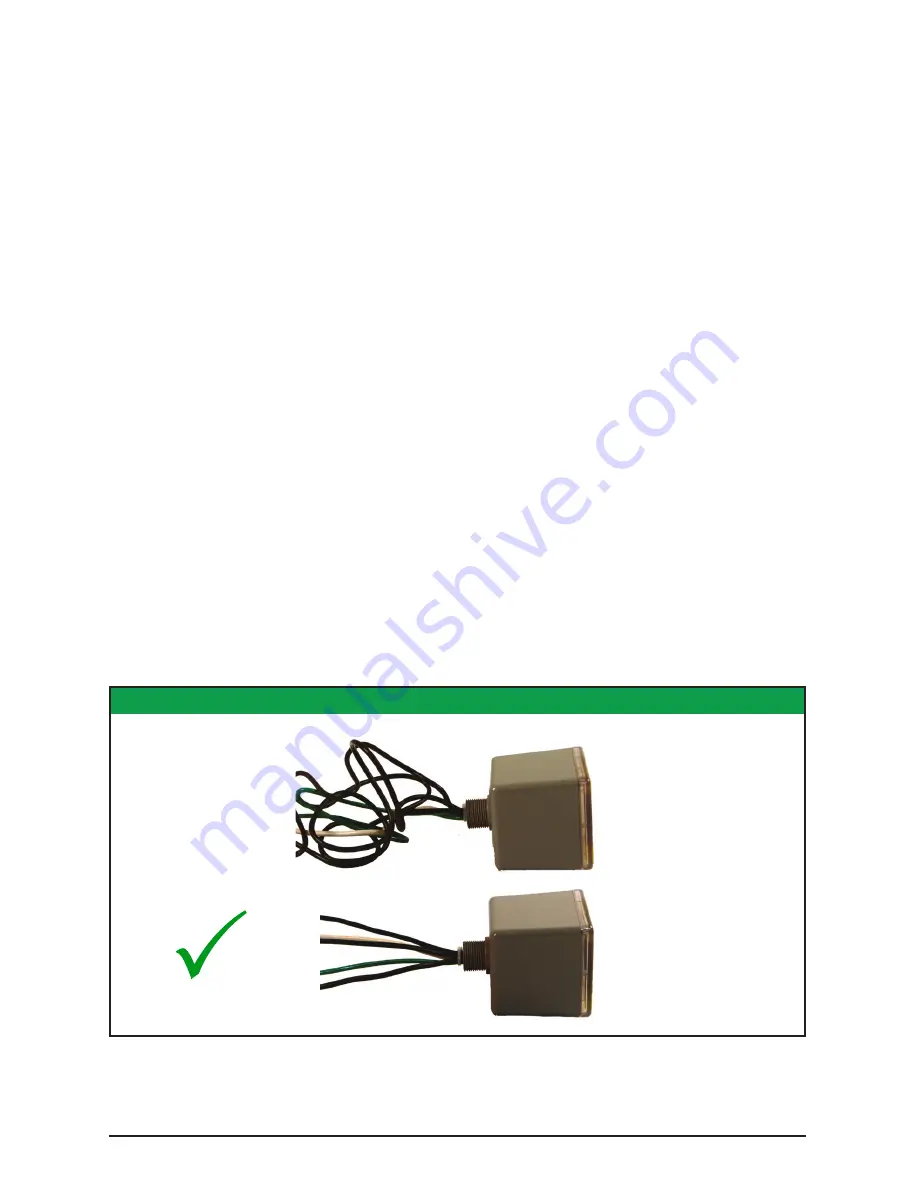
Installation, Operation and Maintenance Manual
8221 RevD 08-18
6
INSTALLATION
Pre-Plan your installation. You need to accomplish the following:
•
Meet all National and Local codes (NEC
®
Article 285, and CEC address SPDs).
•
Confirm System voltage to SPD voltage (a 120V SPD will fail instantly on 240V, 277V, etc.).
•
Mount SPD as close to panel or equipment as possible to keep leads short. (Long leads hurt
performance substantially.)
•
Ensure leads are as short and straight as possible, including neutral and ground. If using a
breaker, use a breaker position that is close to the SPD and the panel’s neutral & ground.
•
If using a breaker, recommended breaker size is 30A due to 10 AWG conductor.
•
Make sure system is grounded per NEC
®
and CEC and clear of faults before energizing SPD. (An
inadvertent system problem may fail the SPD.)
•
Never Hi-Pot test Any SPD. (Hi-potting will cause SPD to prematurely fail.)
1. Use voltmeter to check voltages and ensure correct SPD. See Data Sheet for specs and wire-
outs.
2. Determine Mounting method (See Figure 6) – weather resistant equipment may be required.
3. If SPD has optional Dry Contact, pre-plan its installation.
4. Remove power from panel/source. Confirm panel/source is de-energized.
5. Identify breaker location and SPD location. Position SPD such that LED is best visible.
6. Mount SPD – weather resistant applications require additional sealing, O-rings, etc.
(not included)
• Remove an appropriately sized knockout from panel.
• Connect conductors as appropriate – leads should be short and straight as possible
(Connect a system Hi-Leg to SPD’ Phase B).
7. Label or mark conductors as appropriate (neutral: white, ground: green, energized: black, hi-
leg: orange).
8. Make sure system is bonded per NEC
®
and CEC and is clear of hazards or faults before
energizing. (N-G bonding not per NEC
®
and CEC will fail SPDs: This is the #1 cause of SPD
failures)
9. Energize and confirm proper operation of green LED indicator and/or options.
(Affix supplemental label accessory if appropriate. See Figure 6.)
FIGURE 2: LEADS SHORT & STRAIGHT
X
NOT
GOOD
GOOD
Cut off
Excess Length
Do Not Loop or Coil
Short & Straight




























